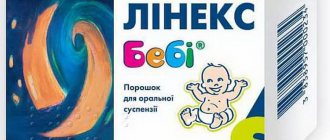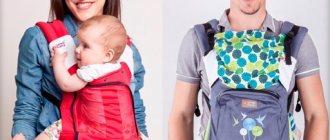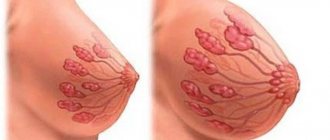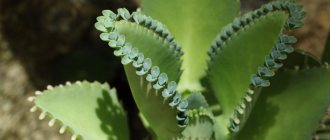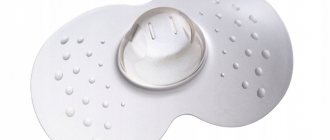Hernia in newborns: where does it come from?
If the baby has any defects in the abdominal wall, then internal organs begin to protrude through them. In the case of an umbilical hernia, organs protrude through the navel area. The larger the ring, the stronger the bulging will be. The navel ring is a special piece of tissue through which part of the umbilical cord passed in the womb. Once the umbilical cord is removed, the belly button ring begins to scar. If the connective tissue is weak enough, then a hernia appears.
By the first year of a child’s life, the connective tissue becomes more rigid, and therefore the umbilical hernia goes away on its own.
Methodology
The method of treating an umbilical hernia involves constantly maintaining it in a reduced position. Additionally, massage and gymnastic exercises are used. Keeping your belly button in the correct position promotes healing.
The reasons why the disease occurs in a newborn are: strong tension in the abdominal muscles and weak muscles in the navel area. Once the umbilical cord is cut and tied, a ring is formed around it. The muscles of the anterior abdominal wall develop and strengthen by 2-3 years.
Due to this pathology, protrusion of part of the intestine, abdominal cavity, and subcutaneous fat layers occurs. The danger of the disease is compression of part of the intestine, which can lead to tissue necrosis.
To properly seal a hernia at home, you need to consult a pediatric surgeon. For the first time, the doctor will glue the patch on himself and tell you about the manipulations.
To begin, tear off a piece of tape (about 7 cm) from the reel and glue it near the navel on one side. With the second finger, lower the navel down, with two fingers tuck it behind the fold of skin and add the patch.
You need to wear the bandage for 4 days. During bathing, the patch used to cover the navel should be soaked in water, removed, and the skin should be lubricated with baby cream.
Causes of umbilical hernia
Most often, an umbilical hernia appears under the influence of several factors:
- The influence of various aspects on the fetus, which negatively affects its development. For example, such aspects include chemical and infectious exposure, etc. As a result of all this, the umbilical ring is not inserted correctly.
- Presence of flatulence, constipation, colic. As a result, the baby constantly strains, which leads to the fact that the umbilical ring heals more slowly than usual.
- Poor ligation of the umbilical cord.
- Weak muscles.
How is an umbilical hernia treated?
If the child’s development proceeds normally (the baby is active, has a good appetite, and has a proper diet), then in this case the hernia usually disappears on its own around the second or third year. However, it is important to ensure that the child does not have constipation, as this is an aggravating factor.
Massage
In terms of treating an umbilical hernia, massage is good. To do this, you need to stroke the baby's belly clockwise every day. All movements must be careful and leisurely.
Movements from the top to the bottom of the abdomen, with gentle pressure, are also suitable. It is helpful to place your baby on his stomach every day. This allows for better removal of gases, and also makes it possible to more actively train the child’s arms and legs. Accordingly, the baby’s abdominal wall will strengthen faster.
Physical training
Physical education should be prescribed by a doctor, and after the hernia has been repaired and fixed with a special plaster. Otherwise, the hernia may become pinched, which carries additional risks for the child’s health.
The younger the baby, the higher the prognosis for his successful recovery.
Types of patches
Profix patches for umbilical hernia
You can purchase special adhesive plasters at any pharmacy without a doctor’s prescription. Universal products are characterized by a traditional rectangular shape, the inside has a fabric layer, and the outside has an adhesive layer. “Bandages” are developed specifically to prevent the formation and treatment of umbilical hernia in newborns. There are many varieties, but they all have a similar principle of operation.
- The Porofix medical patch was developed specifically for newborns. All features of the course of the disease and the physiological characteristics of the child were taken into account. The medical belt is made of high-quality cotton and does not cause allergic reactions. The special shape of the fasteners allows you to securely and easily fix the skin fold above the navel. The original product helps strengthen the muscles of the anterior wall of the abdominal cavity and restores the correct anatomical structure of the internal organs. Use is contraindicated until the umbilical wound has completely healed. If you neglect this, the skin under the fold will become wet, which will create favorable microflora for the proliferation of pathogenic organisms. Change the adhesive plaster at intervals of 1-2 days.
Universal patch Hartmann - The universal medical plaster from the German manufacturer Hartmann visually resembles an ordinary plaster with a tissue layer in the middle. The treatment belt is made from non-woven rags, which does not cause an allergic reaction. Each unit is individually packaged and sealed. An additional advantage is that it is waterproof, which prevents infection of an unhealed wound near the navel. Can be used to eliminate a hernial sac and other purposes.
Corrector patch for the treatment of umbilical hernia Arilis - Chicco patches are made by a well-established Italian company. They are made from fibers that allow air to pass through; the material does not cause an allergic reaction. A high-quality adhesive composition securely fixes the bandage, and it does not move from the navel. The adhesive plaster is sterile, which allows it to be used even before the umbilical wound has completely healed. Sold in packs of 8-10 pieces.
- Another common medical plaster for newborns is Arilis, it is produced in Russia. The advantage of using it is its unique innovative shape, which treats umbilical hernia and corrects the bulging shape of the navel. The product is secured using a buckle type. Distinctive features are elasticity and transparency. To prevent diaper rash and infection, the surface is equipped with perforations.
The principle of action of anti-hernia patches is the same, so you can choose the appropriate brand on an individual basis.
Umbilical hernia patches - how they work
If an umbilical hernia is found in a child, then it is important to show him to the doctor as quickly as possible. He will already establish the extent of the pathology, and will also tell you how to care for this deviation so that no further consequences arise.
In the case of a hernia, the navel ring begins to expand, and the internal organs get into it, which leads to the formation of an unpleasant lump. The patch helps compress the ring, which makes it possible to avoid protrusion of organs. Tightening the ring helps normalize the umbilical area, restore muscles and strengthen them. As a result, the hernia will decrease in size.
How do they work?
If an umbilical hernia is detected in a baby, it is necessary to urgently show him to a specialist.
The doctor will determine the size of the pathology and also tell parents how to properly care for this deviation in order to prevent complications from occurring. As a rule, the hernia goes away on its own in the first 2 years of the baby’s life.
To ensure a positive outcome, it is necessary to provide the problem area with proper care. A plaster for newborn hernia can be an excellent assistant in this matter.
When a hernia appears, the umbilical ring expands, and the internal organs penetrate inside it, forming something like a lump. The newborn patch compresses the ring, keeping it stable and preventing internal organs from protruding through the umbilical space.
Thanks to the contraction of the ring, the organs are drawn into the abdominal cavity. In this way, the size of the umbilical ring is normalized, the muscles are simultaneously strengthened and their location is restored, which helps to reduce the hernia in size and its complete disappearance.
Types of patches for newborns
There are different versions of patches that are used today by parents and doctors. They allow you to quickly cope with any deviation that has arisen.
Plasters help avoid surgery.
Porofix
This type of patch is one of the most popular and effective. The patch has a unique shape that allows it to remove the hernia faster. When applied to the navel area, two fasteners help to form a tight fold that prevents the internal organs from protruding.
Porofix patches can only be used if the child’s navel is completely healed. Otherwise, infection may enter the wound.
The patches are made of hypoallergenic material; they can also be used to prevent various umbilical diseases.
Hartmann
Another type of patch for the treatment of umbilical hernia. Hartmann patches do not cause any irritation when used, they have the appearance of a rectangle. Using this type of patch, you can not only get rid of a hernia, but also protect your navel from various infections.
Chicco
This type of patch is suitable for children who often experience various colitis, hernia and constipation. The patches are made of breathable materials, which avoids itching and allergies.
The patch easily adheres to the skin and has a sterile pad that is applied to the navel. Typically, one package contains from 8 to 10 patches.
The principle of operation of the patch for umbilical hernia in newborns
Patch for strengthening the umbilical ring
According to statistics, the disease occurs in more than 20% of newborns. To quickly get rid of the problem and prevent the development of complications, doctors often recommend that young parents apply an adhesive bandage to the hernial sac. But the patch must be special. The traditional one, which adults use to seal wounds, is not suitable.
Its operating principle is extremely simple. Plays the role of a bandage or medical belt. Reliably fixes sensitive skin and muscles in the correct position, and also prevents protrusion of internal organs. This allows for faster formation and closure of the umbilical ring. The advantage of using a special patch is that the infant does not experience discomfort or pain, since the special “bandage” is made of breathable materials.
Depending on the type of patch used, the duration of the therapeutic course can vary from 7 to 30 days. It is important to consider that the product is used in combination, as an auxiliary, and not the main means of treatment. Therapy is also aimed at strengthening the muscles of the anterior abdominal wall. For this purpose, massage, physical therapy, swimming and frequent lying on the stomach are prescribed.
It is strictly prohibited to seal an umbilical hernia in newborns with a regular adhesive plaster. This is due to the use of synthetic materials and aggressive adhesives in the manufacture.
Rules for using patches
There are certain rules for using patches to treat hernia in newborns. In particular, the patch can only be used on healed navel skin. If the navel ring is bloody or festering, then this product should not be used.
All actions must be performed only with clean hands. Even before use, it is important to ensure that there is no entrapment of any organs in the child. Before gluing the patch, the navel must be pushed inward. The skin near the hernia gathers into folds, after which it is fixed with tape. Simple patches are not as good because they peel off too quickly and are generally not as reliable. That’s why doctors usually recommend buying patches against umbilical hernia.
In the case of prompt detection of an umbilical hernia and prompt treatment, this disease completely disappears even without surgical intervention. It is only important to always control the situation and take effective measures.
Treatment of umbilical hernia with a plaster
An effective way to treat hernia in newborns is complex therapy in the form of daily tummy massage, bathing and the use of an umbilical patch. With proper therapy, a hernia up to 3 cm in size can be treated at home.
Despite the apparent simplicity of the method, it is not recommended to engage in independent treatment - firstly, only a doctor should correct a hernia, who will show and teach young parents how to do it correctly, secondly, not every patch is suitable for sealing it, and thirdly, only a pediatrician or pediatric surgeon will be able to determine whether such a measure is necessary or whether the hernia will resolve on its own.
Parents will be taught how to properly massage and bathe a baby by a visiting nurse and pediatrician, who come within the first two days after discharge from the hospital. If the baby is at risk, then the pediatrician will come on the day of discharge. But how to choose an umbilical patch for newborns?
There is no need to choose - the Porofix umbilical plaster from the German company Lohmann & Rauscher is the most effective plaster for the treatment of umbilical hernias in newborns in Russia. According to statistics, 8 out of 10 mothers choose Porofix for complex treatment of a hernia in their baby.




